Learn how to make the best traditional Turkish coffee. This post shows you step-by-step photos of making the recipe, the equipment you need, and how to serve it properly.
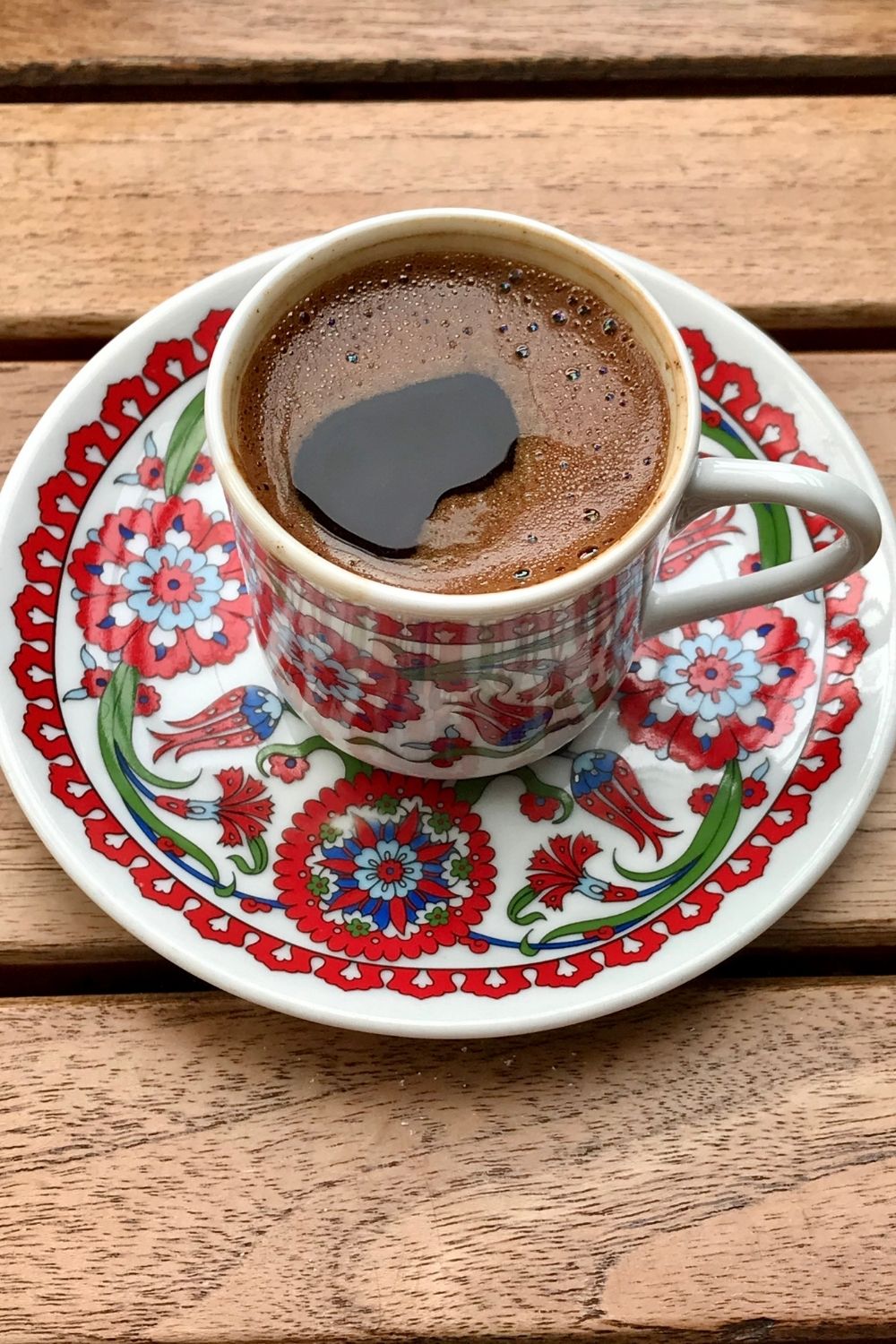
This recipe is part of my Beverages category on the blog, where you can find a few interesting recipes to try, like this Spanish Hot Chocolate Recipe, this Homemade Chocolate Liqueur Recipe, or this Easy Mexican Horchata (Cinnamon Rice Drink).
Jump to:
☕️ This coffee is my favorite!
Turkish coffee has a long and rich history that dates back to the Ottoman Empire, which spanned from the 14th to the early 20th century.
It is believed that coffee was first introduced to the Ottoman Empire through trade with Yemen in the mid-16th century, and by the early 17th century, coffeehouses had become popular gathering places for socializing and exchanging ideas.
Turkish coffee as we know it today is thought to have evolved during the Ottoman era, with the use of an ibrik for brewing and the addition of little sugar and spices to the coffee.
The preparation and serving of Turkish coffee also became an important part of Turkish culture and hospitality, with specific rituals and customs associated with the practice.
So, this coffee has been around for several centuries and has become an important cultural symbol of Turkey and the surrounding region.
☕🇹🇷Turkish Coffee in Eastern Europe
Turkish coffee has a long and significant history in Eastern Europe, where it was introduced during the Ottoman Empire's expansion into the region.
As a result, the practice of drinking and making Turkish coffee is deeply ingrained in the cultural heritage of many Eastern European countries, including Bosnia and Herzegovina, Croatia, Serbia, Romania, and Bulgaria, among others.
In these countries, Turkish coffee is typically prepared in an ibrik and served in small cups, often accompanied by sweets or pastries.
Turkish coffee preparation and serving are also accompanied by specific customs and rituals that vary from country to country. Despite its historical and cultural significance in Eastern Europe, Turkish coffee's popularity has waned in recent years, particularly among younger generations who may prefer other types of coffee.
However, it remains an important part of the cultural heritage of the region and is still enjoyed by many people as a symbol of tradition and hospitality. The exceptional taste, body, aroma, and preparation make Turkish coffee far superior to any other coffee I have ever had.
I grew up watching my Romanian family and friends making this coffee and always loved how simple and delicious this beverage can be if it is done right.If someone would come to visit us, the first thing my mom would do was to place the Ibrik ( the best Turkish coffee pot ), as we called it, or "cezve," with water on the stove. Then, the question was how the guest would like their coffee.
It was a sign of hospitality and respect. Turkish coffee is usually prepared with a moderate amount of sugar, but some people prefer it unsweetened, so it was important to ask the question. One of my grandmothers used to invite her friends in the afternoon for a cup of coffee and some cookie bars she would serve, along with a glass of cold water.
Finishing off a meal, for example, was always an excellent opportunity to enjoy a sweet cup of Turkish coffee with dessert.
🔮☕Reading the coffee grounds:
The art of reading coffee grounds is called tasseography. It is a fortune-telling method that interprets the patterns of tea leaves or coffee grounds on the bottom of the cup.
While the women in my family were not into reading the coffee grounds, I met plenty of people who knew how to do it.
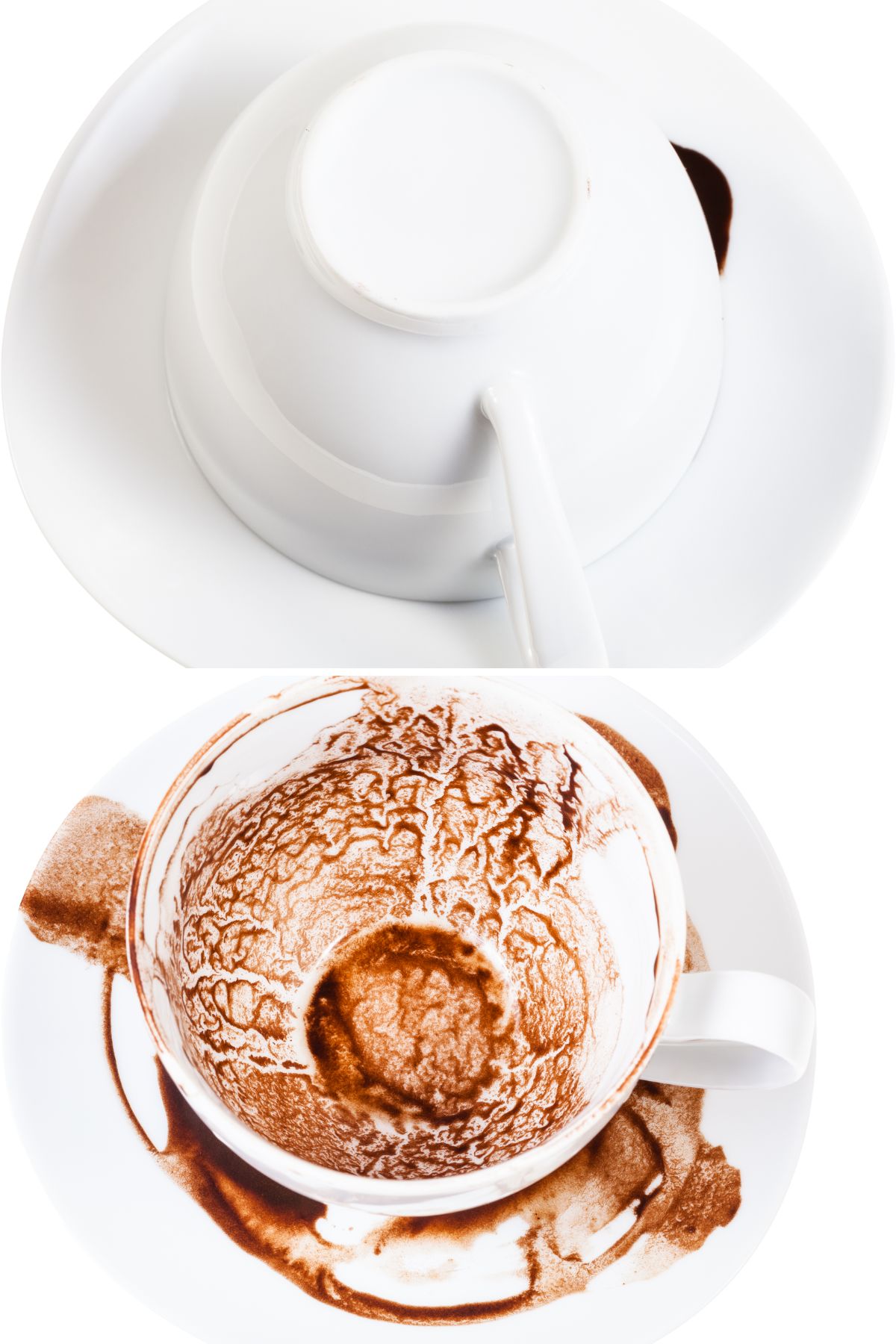
For centuries, this tradition was popular in countries that preferred to drink Turkish coffee. While some people know how to read the coffee grounds for serious results, some read them simply for fun.
💝 Why I Love To Drink Turkish Coffee
- Bold taste - Coffee is considered a morning ritual for many people around the globe, but if you love a strong, rich brew, Turkish coffee might be the one for you. This is because of its unique brewing method that brings out the bold flavor of the coffee.
- Rich and highly caffeinated - Turkish coffee is unfiltered, with a higher amount of caffeine. If you like espresso coffee or strong coffee, you should also try Turkish coffee.
- Easy to make - You just need water, coffee, and sugar to make this coffee.
- Fun to make - There are so many ways to prepare coffee, so why not learn this method as well?
What Kind Of Coffee Do You Need?
Most people would use Arabica beans, but it really doesn't matter what kind of coffee you use as long as you grind it fine. This is actually the secret to making good Turkish coffee. Also, you should use a light or medium roast because the brewing process will bring out the boldness of the coffee, making it slightly darker/bitter.
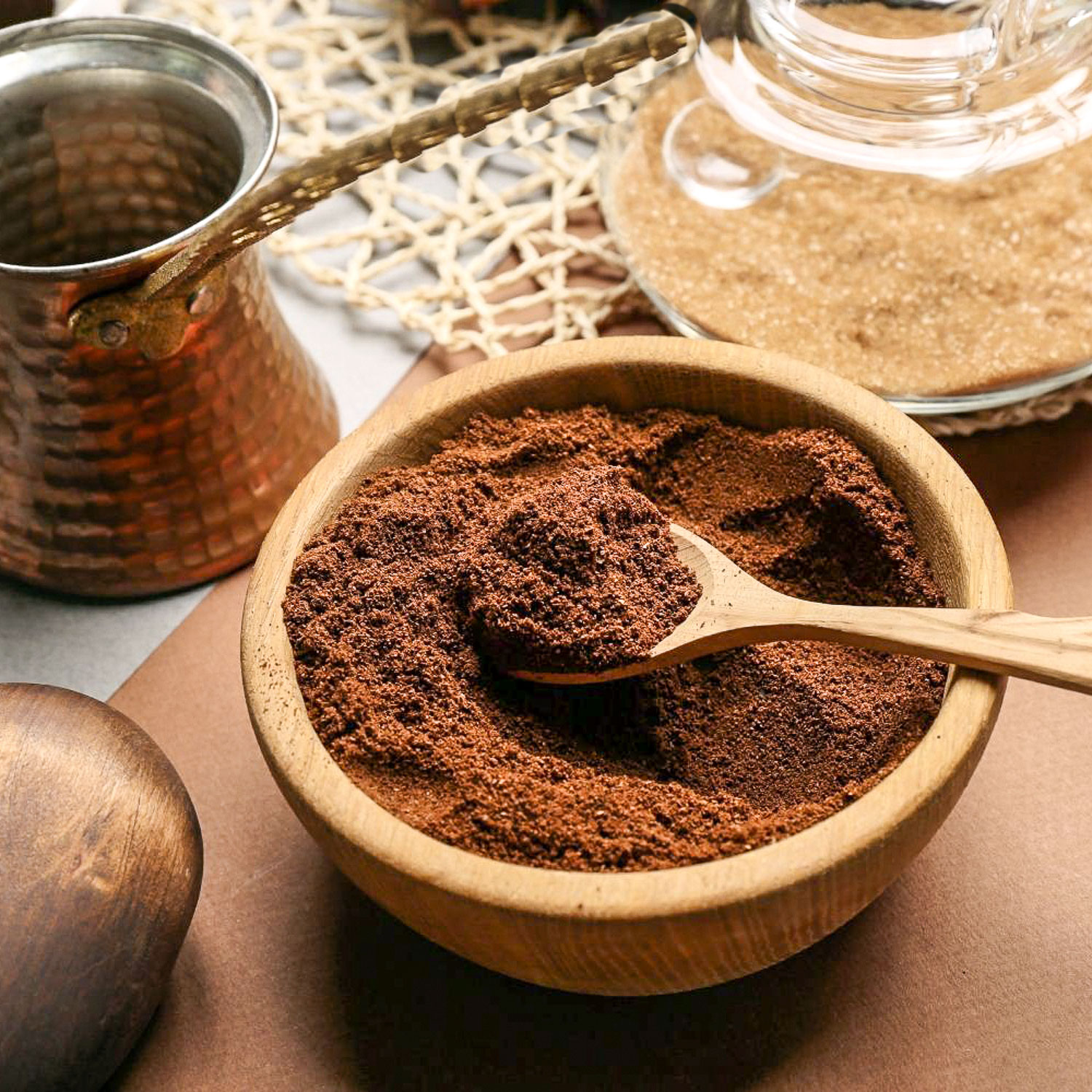
📝 Ingredients and equipment
- An ibrik (cezve), the traditional Turkish coffee pot or a small coffee pot
- Sugar- this is optional
- Coffee
- Water
- Teaspoon
- Small cups : Turkish coffee cups can vary in design and size, but all are meant to hold about 60-85 ml. My cups can hold about 85ml or about ⅓ cup of water.
The serving cups are usually made from thin porcelain to ensure that the coffee stays hot. A porcelain cup is also elegant and suited for a fancy event where coffee and cookies are involved.
The saucer is very important as well, as the cup is really hot. It also facilitates fortune-telling. If you are looking to buy Turkish coffee cups, look for demitasse or espresso cups.
🫖What Is An Ibrik?
An ibrik (also spelled "cezve" or "jezve") is a small, long-handled pot used for making traditional Turkish coffee. It is typically made of copper, brass, or stainless steel and has a wide bottom and narrow top to help create the foam that is characteristic of Turkish coffee.
The ibrik is an important part of Turkish coffee culture and is also used in other parts of the Middle East and the Balkans to make similar types of coffee. The long handle is necessary to manage the pot, as traditional Turkish coffee is usually made on a hot plate or hot sand.
👩🍳 How To Make Turkish Coffee At Home
The main rule: Turkish coffee combines finely ground coffee beans with water (and often sugar) and brings the liquid to a frothy foaming stage, just below boiling. This coffee is never boiled.
Step 1. Measure the water, coffee, and sugar. Place them in the pot.
How much water: Use cold water and measure it with the cup you plan to serve the coffee in.
How much sugar: Sugar is optional, but most people like this coffee on the sweet side. However, add sugar according to your taste.
Traditionally, the sugar is added during the brewing process, not after.
How much coffee: I like to add one heaping teaspoon of coffee for each cup. If you want it stronger or the cups are larger, you can use two heaping teaspoons per cup.
My formula is one heaping teaspoon of coffee + one teaspoon of sugar for each cup = Perfection and happiness.
Step 2. Place the pot of water with coffee and sugar on the stove and turn the heat to medium-high.

Do not stir. Let the coffee "float" on the surface. When the coffee starts to sink into the water, and the water is warm enough to dissolve your sugar, stir it several times and then turn down the heat to low.
Step 3. Keep an eye on the pot. This is the moment when you have to watch the pot. Do not let the temperature get hot enough to start boiling.
The key idea is to let the coffee build a "thick froth," which occurs at approximately 158 F or 70 C, much cooler than the boiling point.
If your brew gets too hot and begins to "rise," move it away from the heat or turn it down.
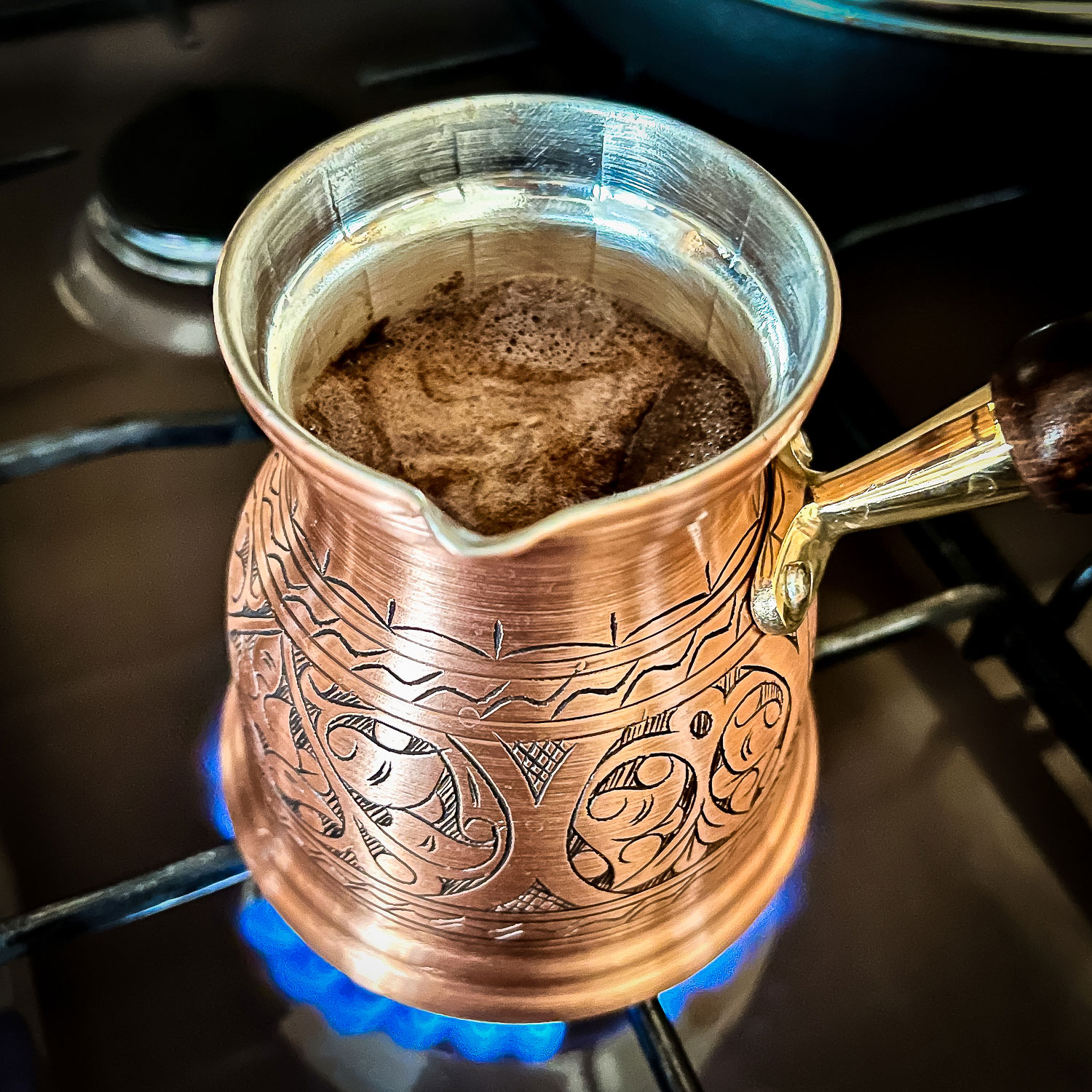
Using a teaspoon, get a little bit of foam into each Turkish coffee cup. Put the pot back over medium heat. Let it rise, and remove it when it starts to boil.
Step 4. Serve. Pour the coffee into your cups (quickly at first to get out the foam, then slowly), and make sure that each cup has an equal amount of foam!).
Turkish coffee is enjoyed sip by sip with various sweet desserts, like cakes, cookies, bars, or a nice piece of Turkish delight.
Try these Coffee Flavored Sugar Cookies or a slice of this Best Banana Coffee Cake.
Do not stir the coffee once it's in the cups, as it will disturb the coffee grounds and give you an unpleasant texture when you drink it.
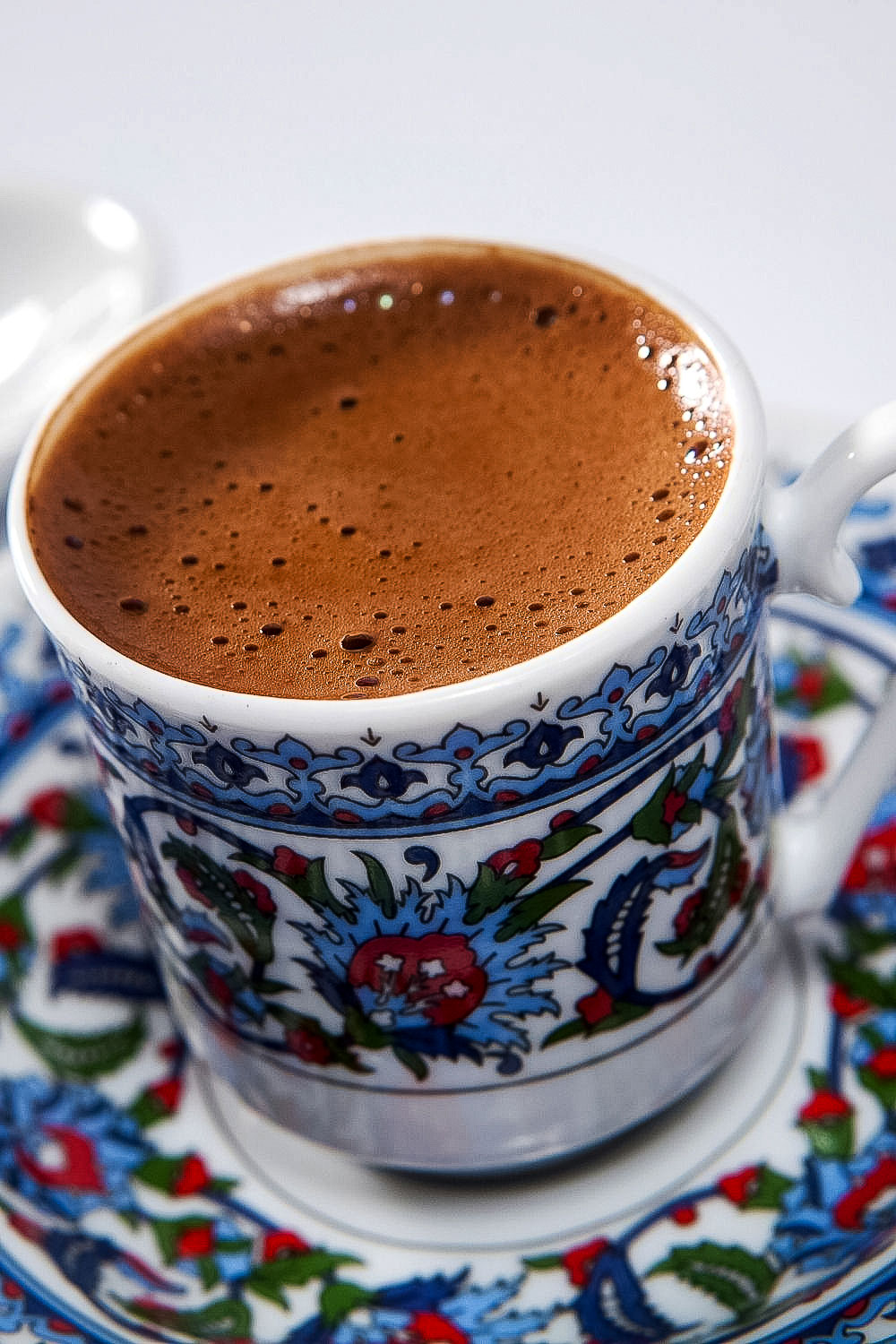
💡 Expert Tip
Adding Cold Water Before Serving: In traditional Turkish coffee making, right after the brewing process is complete, a small splash of cold water is often added to the ibrik or cezve. This helps the coffee grounds settle to the bottom of the pot quickly, making it easier to pour a clear cup without disturbing the grounds.
📦 Storage
This coffee does not keep well once made. It's best to enjoy it immediately while the flavors and froth are at their peak.
🙋♀️ Recipe Faqs
Spices are sometimes added to Turkish coffee in some countries, including Turkey, to enhance its flavor and aroma.
However, the use of spices in Turkish coffee is not universal. The specific spices used can vary depending on the region and individual preferences.
Cardamom is a popular spice that is often added to Turkish coffee. It is sometimes referred to as "Turkish coffee with cardamom." Other spices that may be added to Turkish coffee include cinnamon, cloves, and nutmeg, among others.
Ultimately, the use of spices in Turkish coffee is a matter of personal preference, and there is no one "correct" way to prepare it. Plain or spiced, Turkish coffee holds a significant place in the culinary and cultural heritage of countries across the Middle East, the Balkans, and beyond.
While Turkish coffee is never served with milk, you can add a little bit if you must.
If your question refers to whether you can make Turkish coffee in a saucepan, the answer is yes, absolutely.
You can make Turkish coffee in a saucepan, though it might not be as authentic as using an ibrik or cezve. The specialized design of an ibrik optimizes heat distribution and flavor extraction, but a saucepan will still give you a strong, flavorful cup.

Finally, as you can see, the process is straightforward, and the results are incredible. Once you discover Turkish Coffee, your life will change forever! I hope you will give it a try!

More Recipes To Love
📖 Recipe

Traditional Turkish Coffee Recipe
Ingredients
- 1 cup of water /person
- 1 heap teaspoon for a medium strength coffee
- 1 teaspoon sugar optional
Instructions
- Using a coffee cup, measure the amount of water you will need. One coffee cup of water /per person. Pour the water into the ibrik or pot.
- Add one teaspoon of sugar to each cup and place the pot on the stove. Do not stir.
- Also, add the coffee (1 heap teaspoon/cup) to the pot and DO NOT STIR. Just let the coffee "float" on the surface because if you stir it now, you might cause it to clump up.
- Place your pot of water on the stove and turn the heat to medium-high.
- When the coffee starts to sink into the water, and the water is warm enough to dissolve your sugar, stir it several times and then turn down the heat to low.
- From this point on, observe your coffee. Do not let the temperature get hot enough to start boiling.
- The key idea is to let the coffee build a "thick froth," which occurs at approximately 158 F or 70 C, much cooler than the boiling point.
- If your brew gets too hot and begins to "rise," move it away from the heat or turn it down. You are almost done.
- Pour the coffee into your cups (quickly at first to get out the foam, then slowly) while ensuring that each cup has an equal amount of foam!)
- If you are serving several cups, it is better to spoon the foam into each cup first.
- The Turkish coffee is enjoyed sip by sip with various sweet desserts.



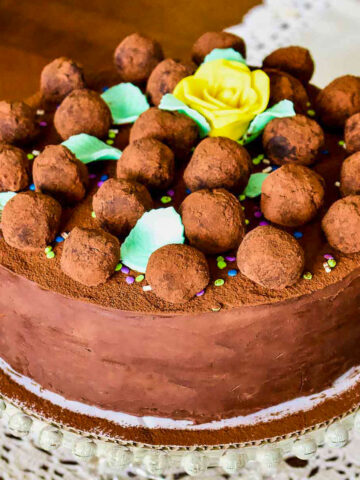



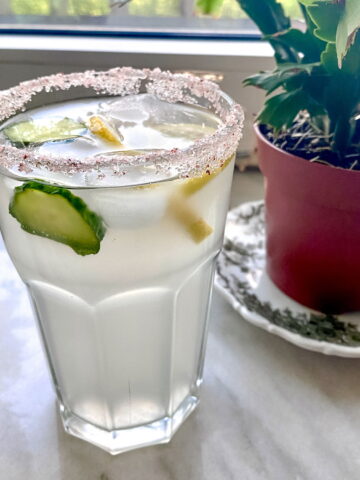
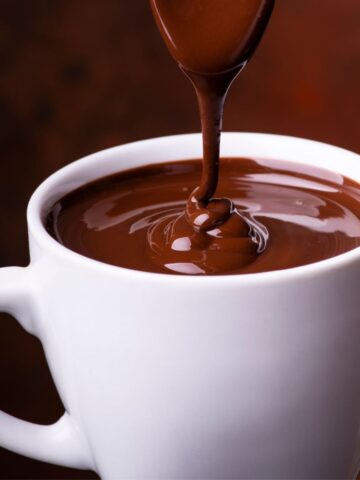
Herta says
Hi, Gabriela.
Thank you so very much for sharing this recipe. I'm from Romania too and the first coffee I ever had was Turkish. I have fond memories of learning how to make it. But as time passed and I got used to the American way, I forgot the directions. I am so very, very happy that I came across your post.
The Bossy Kitchen says
Hi Herta,
Glad you stopped by and found the recipe. I hope you try the coffee. By the way, I love your name. My German grandmother's name was Herta. You will find some of her recipes on this blog. Thanks for visiting!
Cristina says
Hi Gabriela, I've been enjoying your recipes for a long time and was glad to be reminded of the Turkish coffee which I used to like a lot. A little secret that I learned when living in the Middle East - they put 3-4 whole cardamom pods in the water, right at the beginning. The flavor is unbelievable. Thanks again and looking forward to having a cup of Turkish coffee today!
The Bossy Kitchen says
Hi Cristina, Thank you for your comment. I have a paragraph in the article that talks about that. Turkey doesn't use a lot of spices, and definitely Eastern Europe likes to drink coffee with or without sugar and no other spices. However, most Arabic countries, do use cardamom. I have to try it too and see how it is. I actually love cardamom and I am sure the coffee will be divine!
Sonia Griffin says
I stumbled across your blog checking out cabbage rolls. I am told that my mother's last name means Drake in Romaniaqn= Ratzoy. The paternal part of me is Ukrainian===Starchuk... from Carpathian Region./ Chernovtsy. So I think I will have a ball learning about me trying your recipes. I better hurry cause I am 83 already--- Time is gone. to be learning.
I made cabbage rolls a bit different. The filling was parboiled rice and sauted diced bacon ,onion or hamburger but sparsley.. . Otherwise the methods were very similar.. plus dried dill slightly. We can still get sourcrout heads of cabbage here in Canada / Calgary. (my grand daughter married a farmer in Minnesota). You sound like a very interesting person. We lived in Lutsk , Ukraine for 2 years during the time of the downing of the Big Plane. Husband taught at the University. Turkish coffee sounds very interesting.